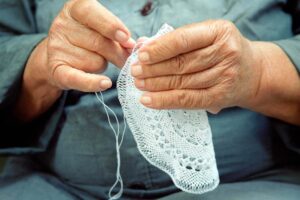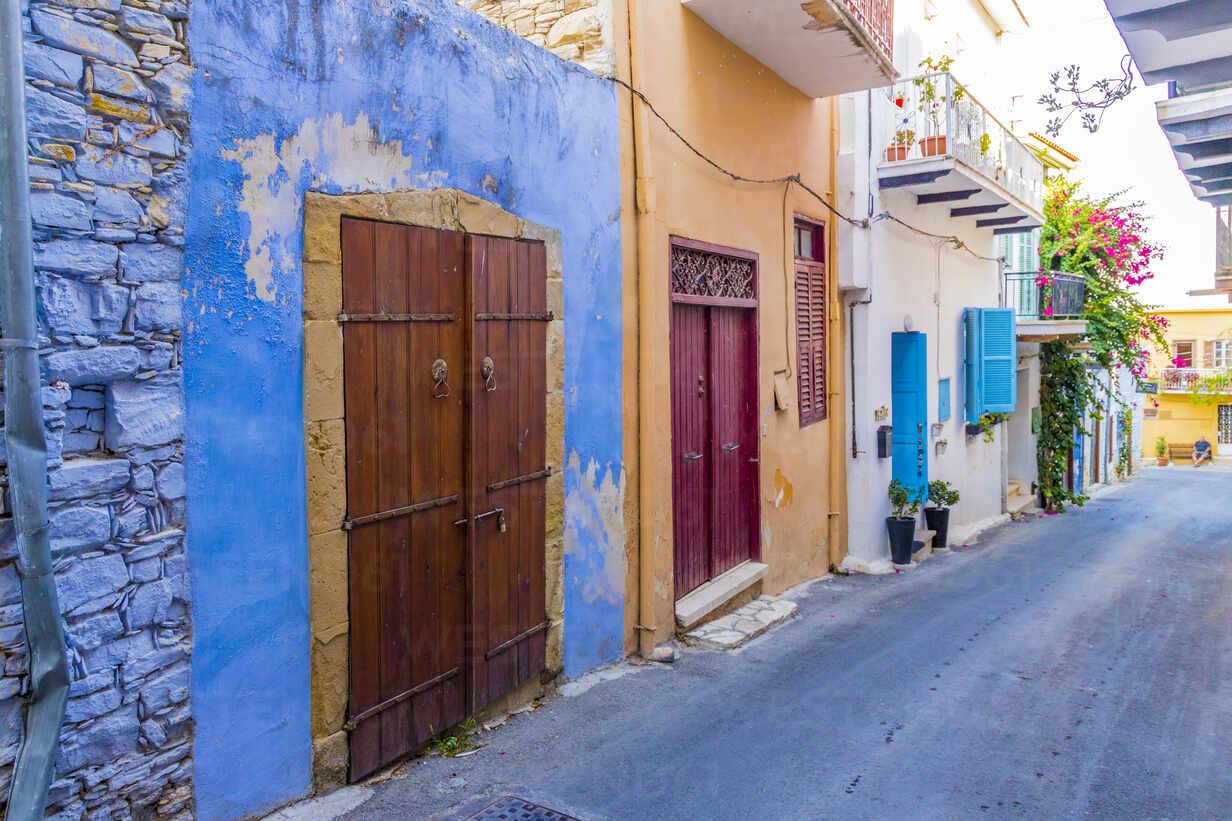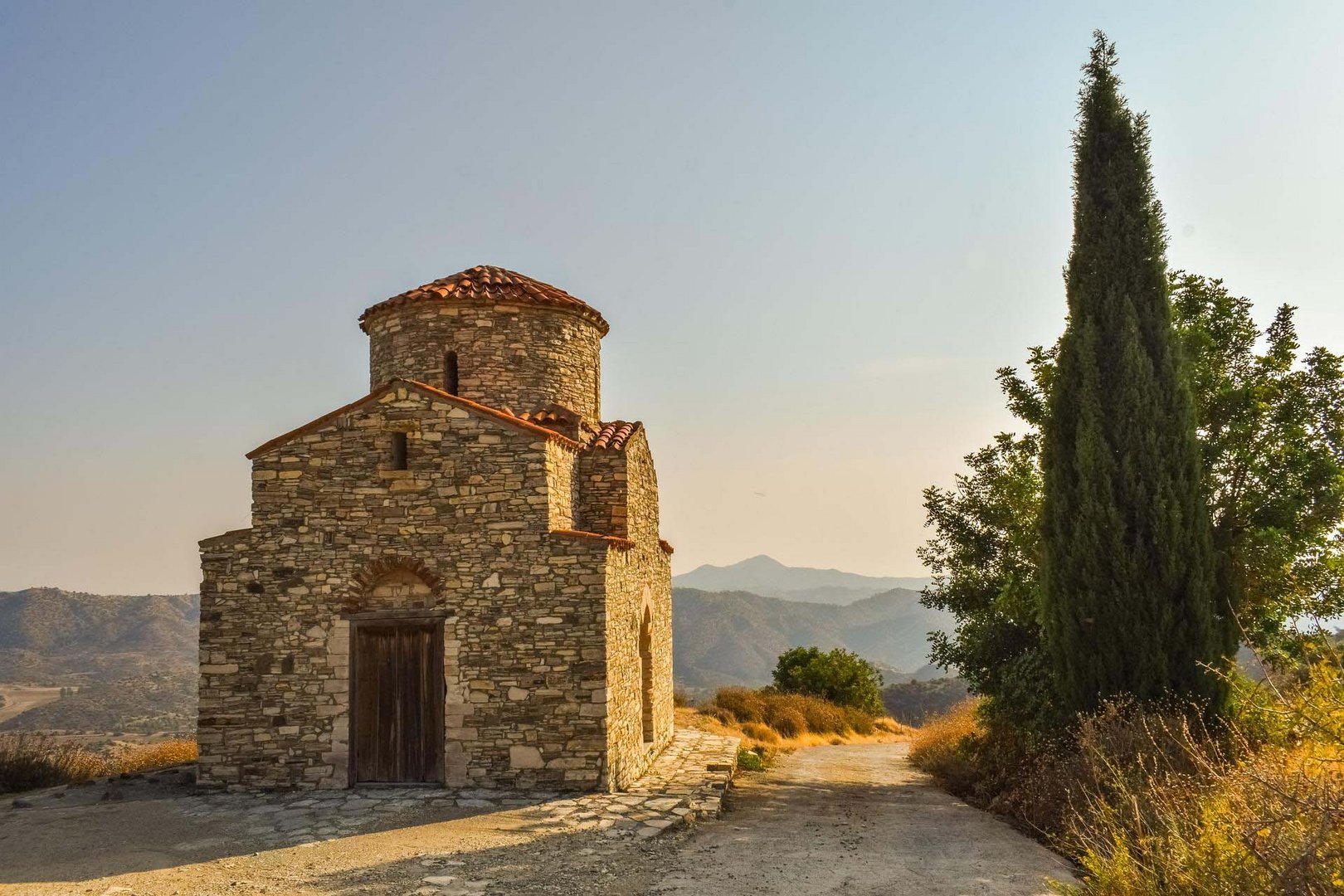Cyprus Mail 1 September 2022 - by Paul Lambis
The village serves as a window into the island’s past. PAUL LAMBIS is impressed by the culture and the views
Immersing yourself in an open-air museum is an ideal way to reconnect with Cypriot ancestry or experience life in a bygone era. Lefkara is one of the most authentic and best preserved villages on the island, and arguably one of Cyprus’ most sustainable tourism destinations.
As a result of the ongoing efforts to preserve the village’s charm and character, which have made Lefkara famous worldwide, it has even received extra recognition as one of the world’s Best Tourism Villages.
 When one thinks about Lefkara, images of women sitting in doorways shaded by bougainvillaea along winding streets, skilfully sewing on pieces of beige Irish linen with a needle and single thread spring to mind. The mere thought of Renaissance artist Leonardo da Vinci visiting the village at the end of the 16th century, drawing inspiration from the lace for the tablecloth design in his The Last Supper masterpiece, is enough to attract visitors.
When one thinks about Lefkara, images of women sitting in doorways shaded by bougainvillaea along winding streets, skilfully sewing on pieces of beige Irish linen with a needle and single thread spring to mind. The mere thought of Renaissance artist Leonardo da Vinci visiting the village at the end of the 16th century, drawing inspiration from the lace for the tablecloth design in his The Last Supper masterpiece, is enough to attract visitors.
Located in the Larnaca region, Lefkara is surrounded by the unspoiled beauty of mountains, forests, groves, nature trails, and endemic and indigenous flora and fauna. “The name of the village is derived from the colour of the limestone that surrounds it,” Larnaca Tourism Board officer Nana Asmeni Pavlou said. “Lefka means white in Greek, and ori implies hills, mountains.”

Walking through Lefkara’s streets will give you the impression that you are in a labyrinth of quaint alleys filled with countless needlework, lace embroidery, and silversmiths’ workshops, while the 14th century Church of the Holy Cross is a prominent landmark that features well-preserved frescoes, and a crypt where the large, silver gilded cross believed to contain wood from the original cross of Christ is kept.
Traditional stone-built homes are meticulously preserved, and around every corner is a variety of museums showcasing everything from arts and crafts rooted in tradition to contemporary art galleries, intertwined with eateries, coffee shops, wine merchants, small hotels, agrotourism accommodation, and souvenir shops.
 “The village constitutes an open-air museum, with over 500 listed buildings and 35 ancient monuments, which makes it one of the regions in Cyprus with the highest number of protected buildings in proportion to its total number of buildings,” Pavlou told Living.
“The village constitutes an open-air museum, with over 500 listed buildings and 35 ancient monuments, which makes it one of the regions in Cyprus with the highest number of protected buildings in proportion to its total number of buildings,” Pavlou told Living.
“It is important to note that the stringent regulations now in force for the issue of urban planning and building permits by the competent authorities have significantly contributed to the preservation and protection of this exceptional heritage.”
According to Pavlou, Lefkara was formerly listed as one of the top 30 places in Europe to visit by Japan’s National Tourism Organisation. “The successful preservation of Lefkara’s rich cultural history, traditional folklore architecture, handicrafts, as well as its remarkable historical and religious monuments, are defining traits that set it apart from other villages in Cyprus.”
And, Lefkara’s hand embroidered lace linens represent the island’s only craft to be included in Unesco’s World Heritage List of Intangible Culture.
 The village’s strong links to Christianity are evident in its 18 churches and chapels, while its natural wealth unfolds across an undulating backdrop featuring 18th century olive groves, nature trails offering breathtaking views of the countryside, and the imposing dam, which is a favourite fishing spot.
The village’s strong links to Christianity are evident in its 18 churches and chapels, while its natural wealth unfolds across an undulating backdrop featuring 18th century olive groves, nature trails offering breathtaking views of the countryside, and the imposing dam, which is a favourite fishing spot.
“There is no doubt that the mountainous village of Lefkara stands out for its unparalleled beauty, however the inclusion of the village by the World Tourism Organisation in its list of Best Tourism Villages, is not solely for its aesthetic value,” Pavlou said. “Lefkara has been recognised for its sustainable tourism practices.
“For a tourist destination to be considered sustainable, the existence of locally-grown produce is a necessity,” she Pavlou explained. “The village makes use of its abundant olive groves for organic olive oil production, vineyards for winemaking, while the area is also known for its carob farming, almond, and honey production.”
According to Pavlou, Lefkara is increasing its digital literacy and closing the digital divide. “Through EU-coordinated initiatives, such as WiFi4EU, the village has launched a project to install free Wi-Fi hotspots for visitors in public spaces, including parks, squares, libraries, health centres and museums.”
The village of Lefkara is a vast homage to the culture and history of Cyprus. It serves as a year-round open-air museum where visitors can immerse themselves in the country’s rich culture, fascinating past, and awe-inspiring scenery.
